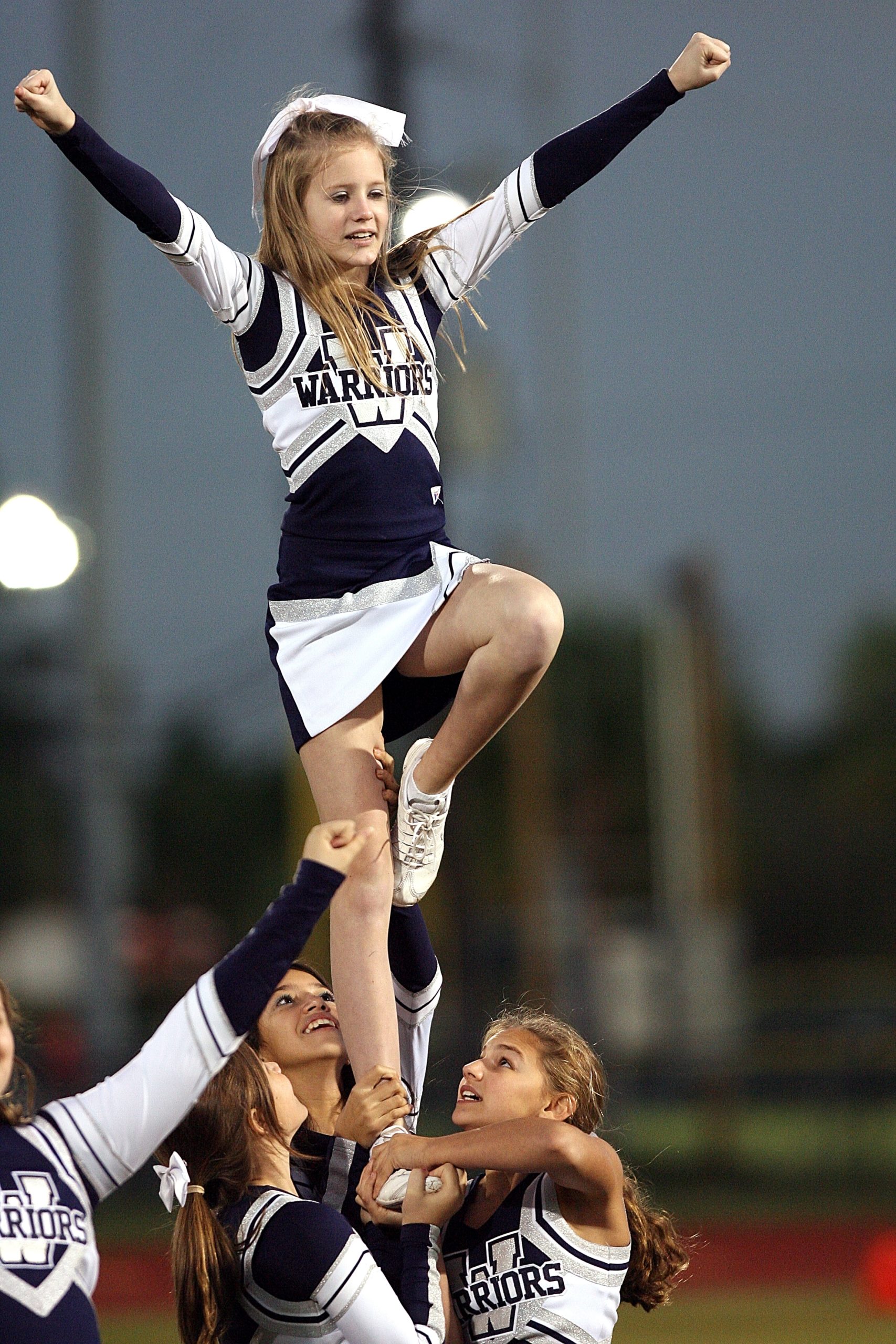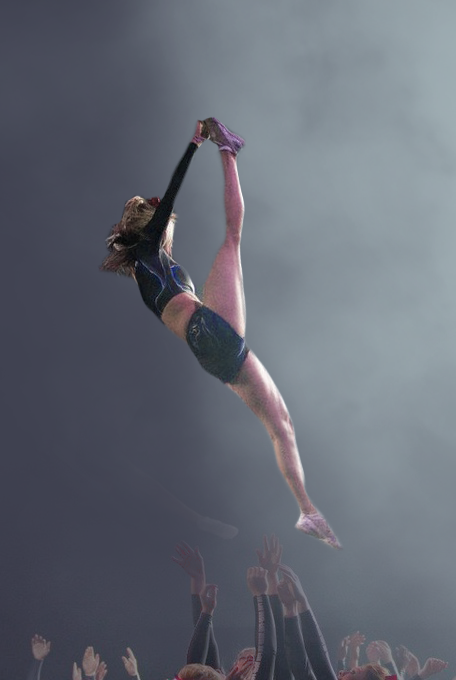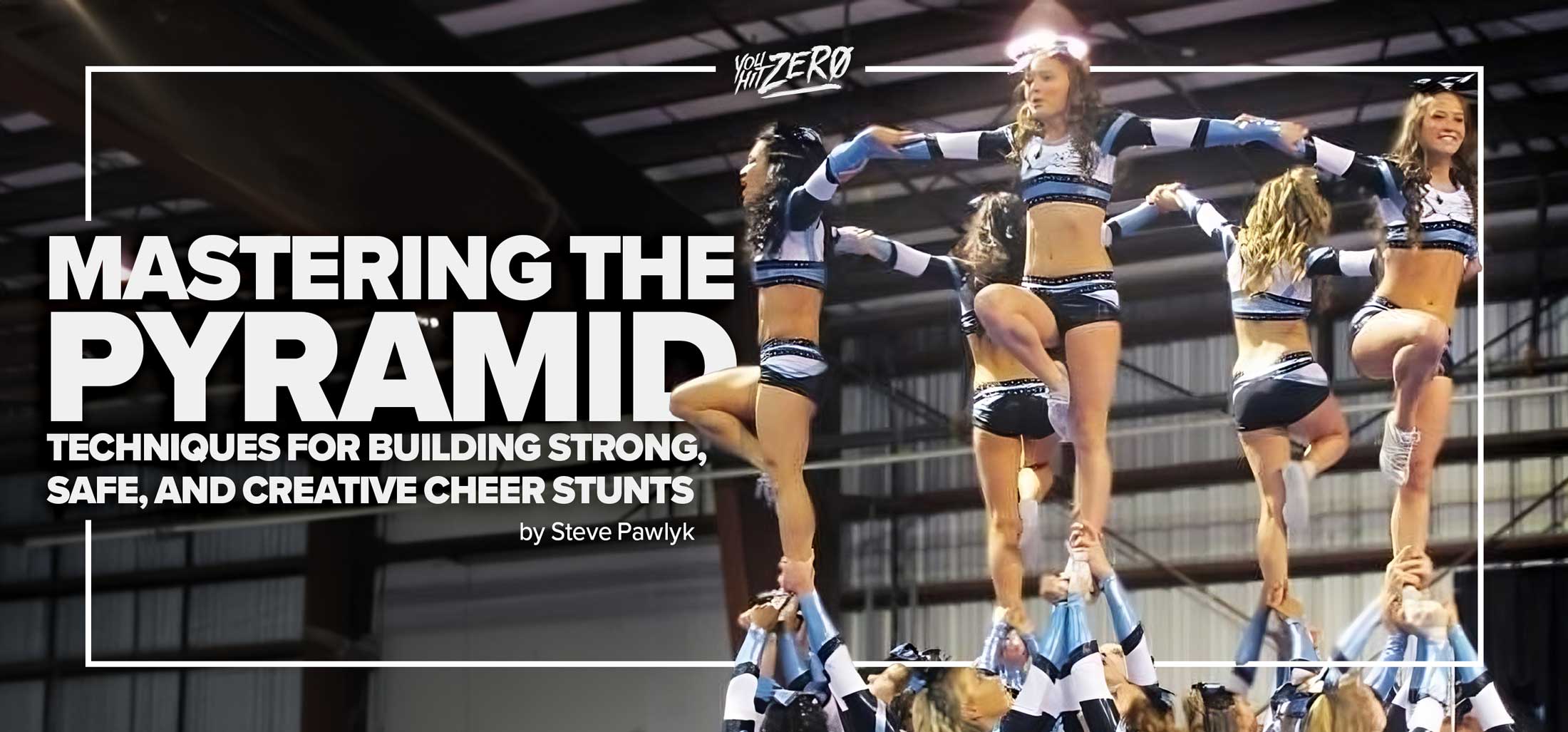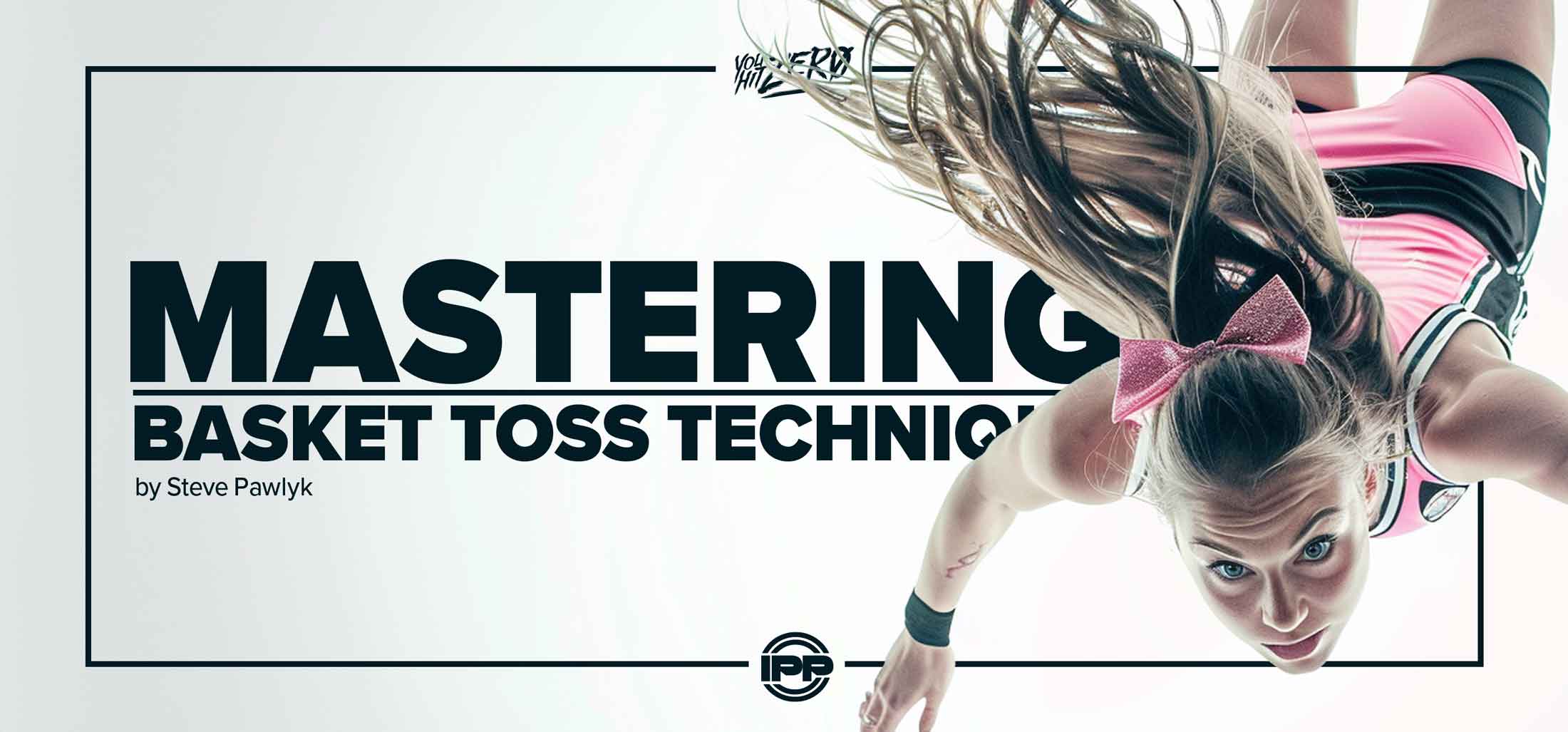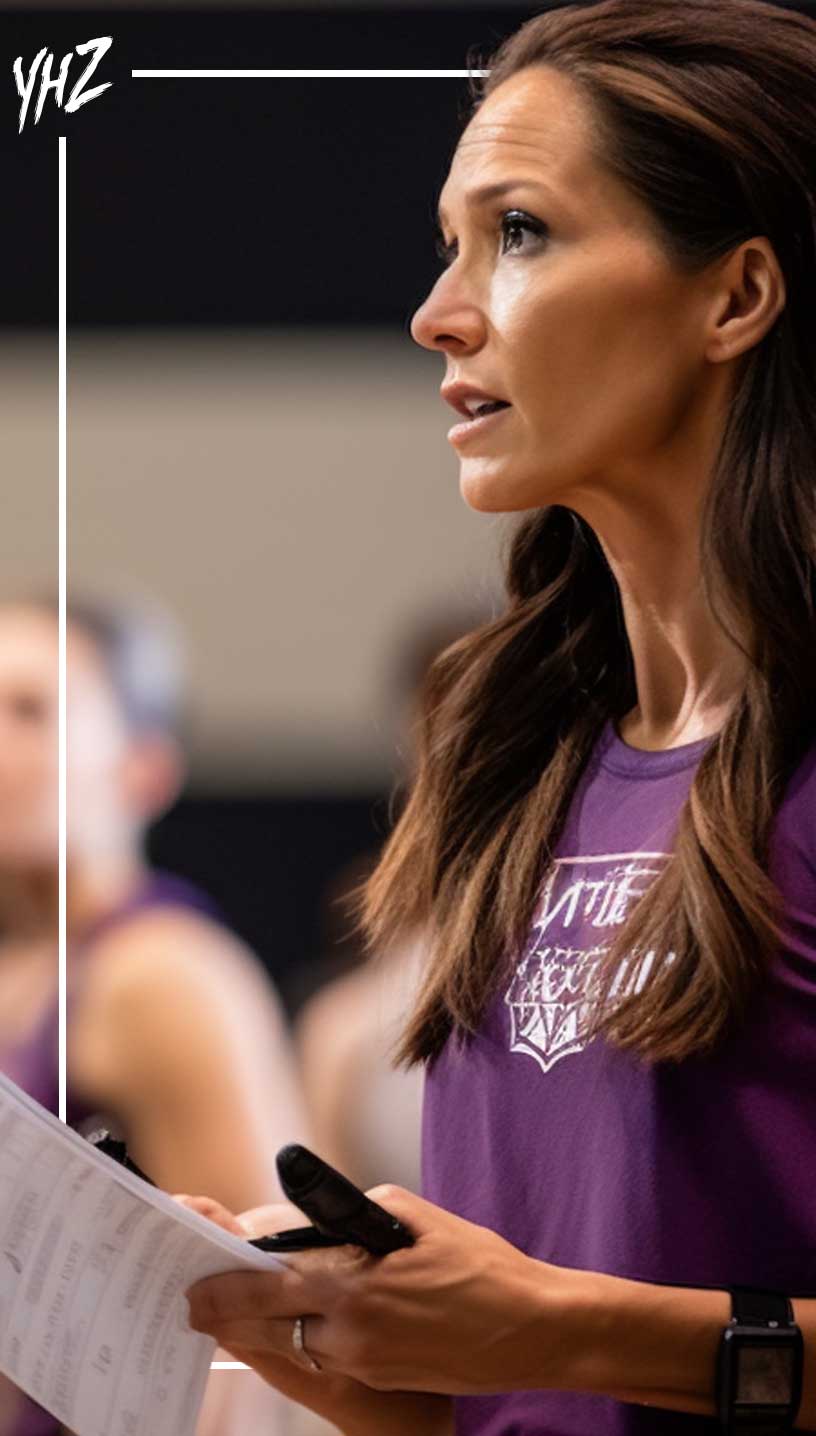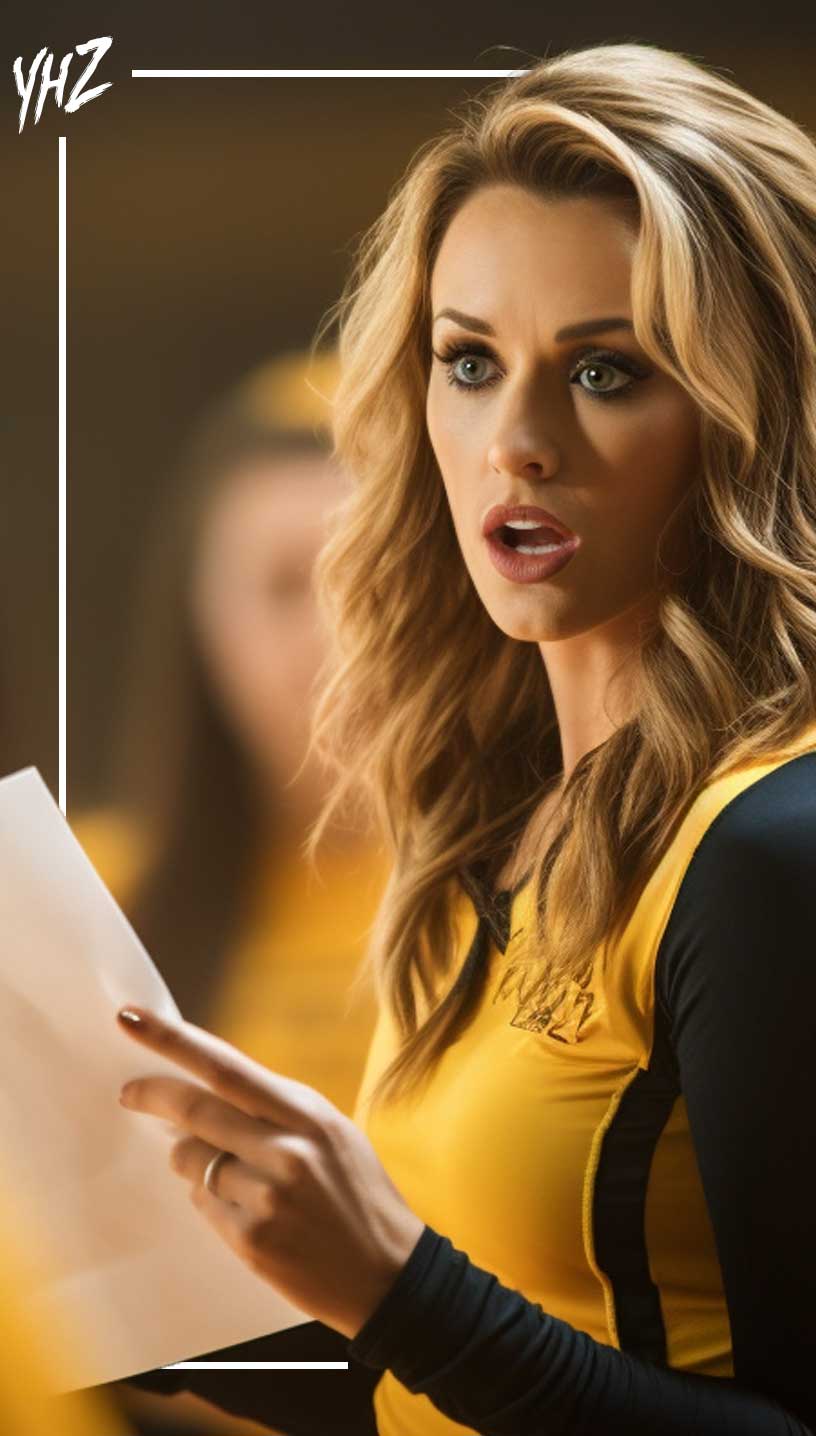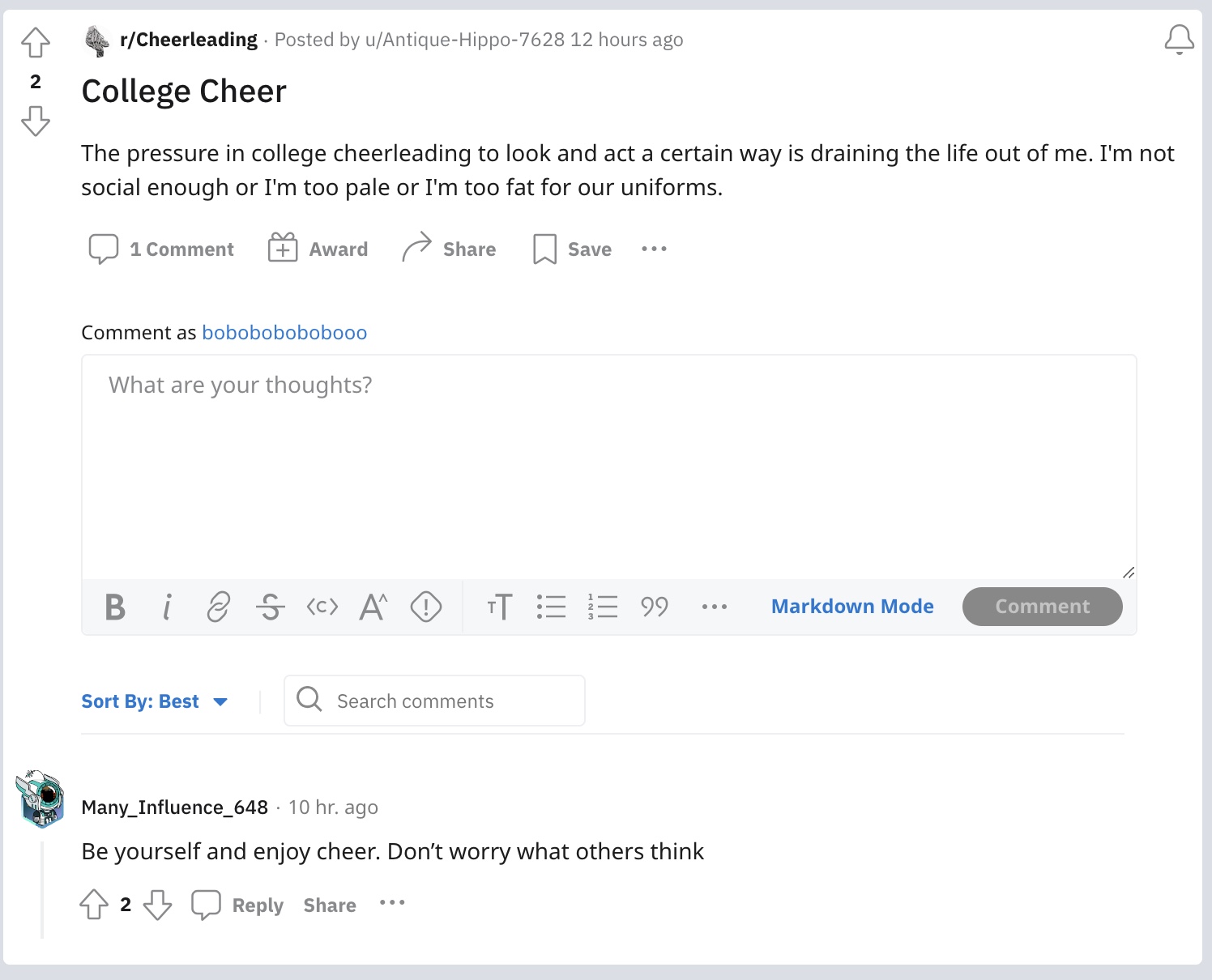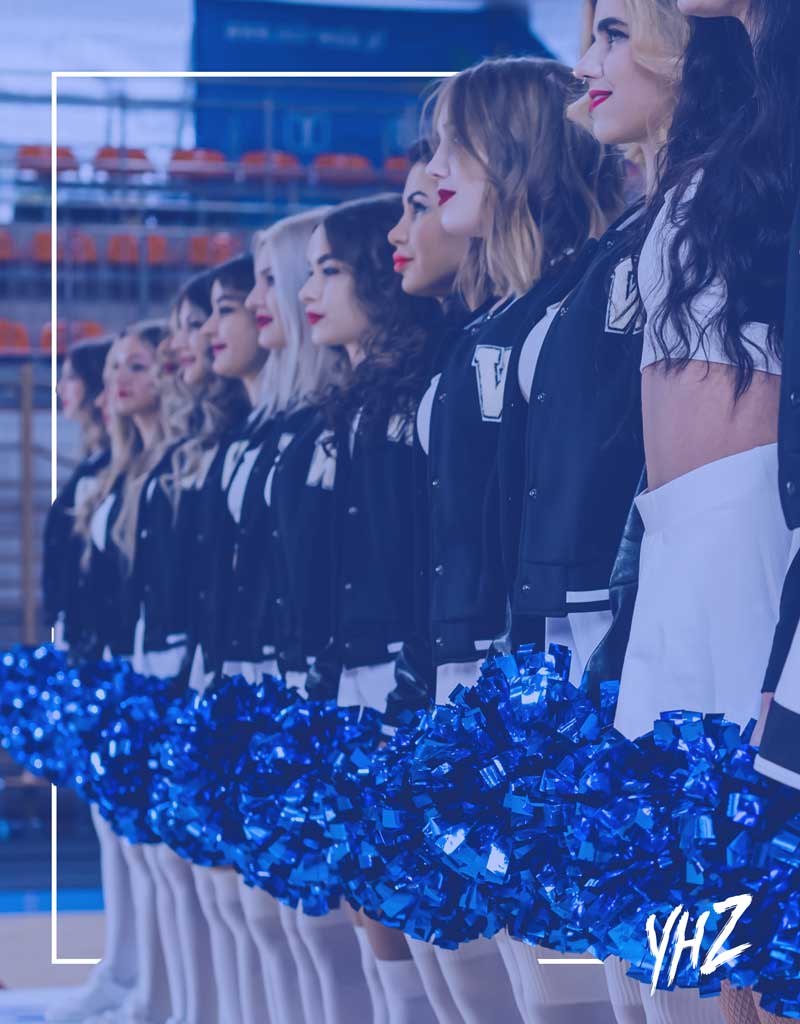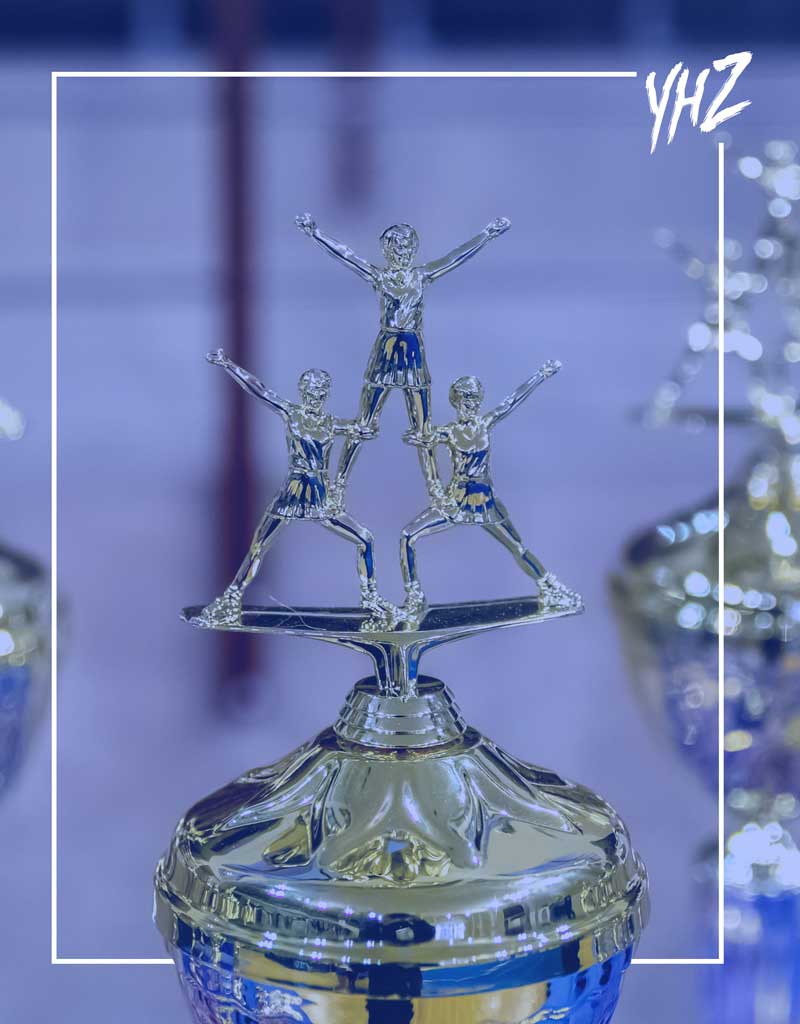By Steve Pawlyk
Published August 15, 2024
Cheerleading pyramids are one of the most dynamic and visually stunning elements of a cheer routine. They not only showcase the strength and skill of the athletes but also the creativity and precision of the coach. However, building a successful pyramid requires more than just physical prowess; it demands a deep understanding of technique, safety, and teamwork. In this article, we’ll explore essential techniques for constructing strong and safe cheerleading pyramids, offer unique ideas to make your stunts stand out, and provide a step-by-step guide on “How to build a cheer pyramid?”
The Foundations of a Strong and Safe Cheerleading Pyramid
Before diving into the creative aspects of pyramid building, it’s crucial to understand the fundamentals that ensure both strength and safety. Here are some key techniques:
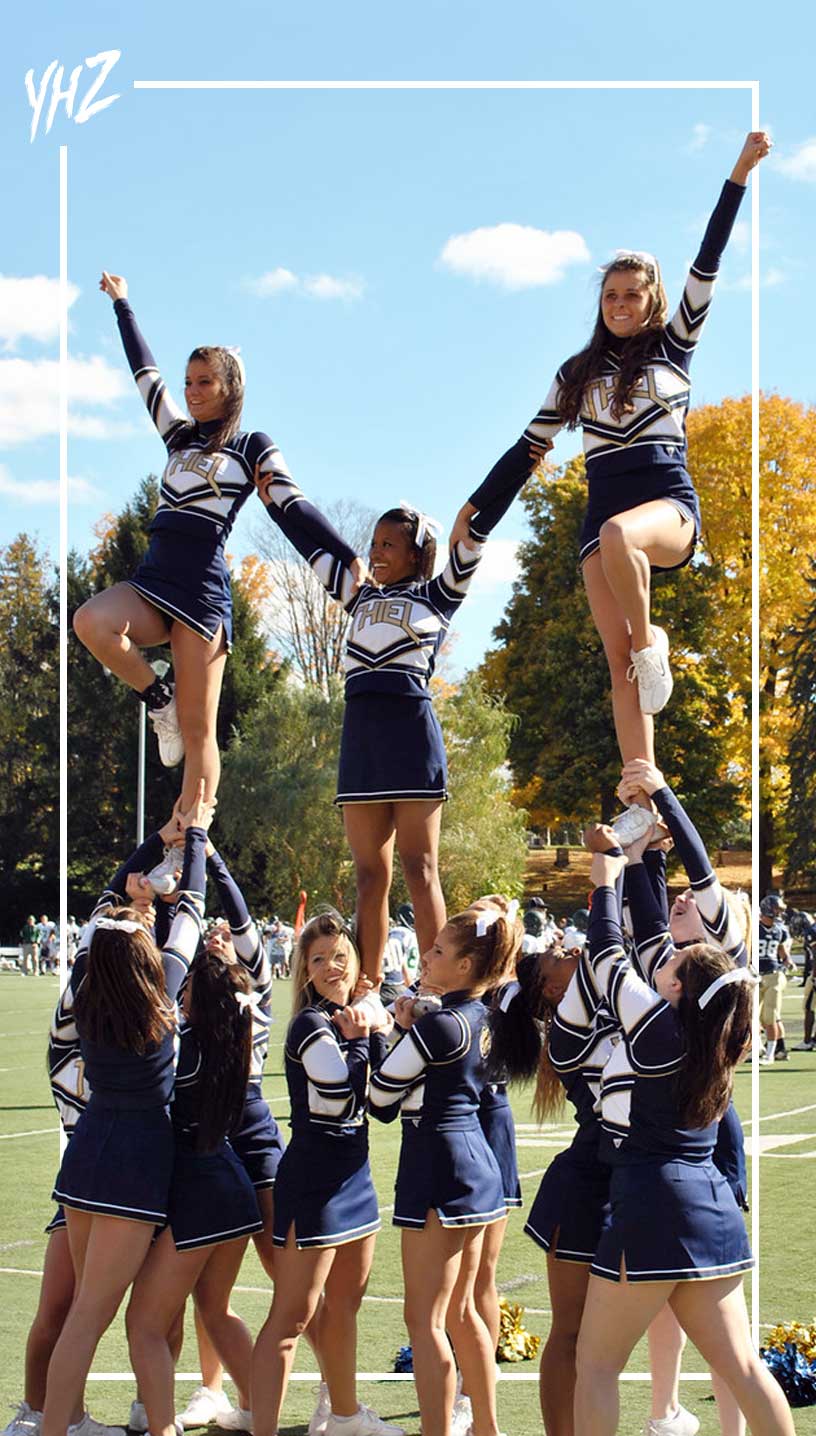
- Solid Bases: The Foundation of Success
- Proper Stance: Bases should have a stable, shoulder-width stance with slightly bent knees to absorb the weight of the flyers. Their core should be engaged, and their back straight to maintain balance.
- Grip and Hand Placement: Bases must have a firm grip on the flyers’ feet or ankles. Proper hand placement ensures that the flyers are secure and can be adjusted quickly if needed.
- Communication: Clear and consistent communication between the bases and the flyers is essential. A simple cue like “ready” before lifting can make all the difference in timing and coordination.
- Flyer Technique: Lightness and Balance
- Core Engagement: Flyers should keep their core tight and engage their muscles to maintain balance. A strong core allows flyers to stay light on their bases and reduces the risk of collapsing the pyramid.
- Body Alignment: Flyers need to focus on keeping their body aligned, with hips over ankles and shoulders over hips. This alignment helps maintain stability and makes adjustments easier if the pyramid starts to wobble.
- Trust and Confidence: Confidence is key for flyers. They must trust their bases and execute their moves with precision. Hesitation can lead to instability and increase the risk of falls.
- Spotters: The Unsung Heroes
- Positioning: Spotters should always be in a position where they can quickly intervene if something goes wrong. They are responsible for the safety of the flyers and must be vigilant throughout the stunt.
- Assistance, Not Interference: Spotters should provide assistance without interfering with the stunt. They can help guide the flyers’ feet or offer support when necessary, but they should not disrupt the balance of the pyramid.
Unique Cheer Pyramid Ideas
Once you’ve mastered the basics, it’s time to get creative! Here are some unique pyramid ideas that can set your team apart at competitions:
- The Diamond Pyramid:
- Description: The Diamond Pyramid involves creating a diamond shape with the flyers at different levels. One flyer stands at the top, with two more on either side at a slightly lower level, and a fourth flyer at the base level.
- Why It Stands Out: The Diamond Pyramid is visually striking and adds depth to your routine. It allows for dynamic transitions, such as moving from a flat diamond to a vertical diamond by having the side flyers climb up or down.
- The Rolling Wave Pyramid:
- Description: In this pyramid, flyers move in a wave-like motion, starting from one side and rolling across to the other. This can be achieved by having flyers at different levels perform synchronized movements that give the illusion of a wave.
- Why It Stands Out: The Rolling Wave Pyramid adds fluidity and rhythm to your routine. It’s a great way to incorporate music and timing into your stunts, creating a memorable performance.
- The Starburst Pyramid:
- Description: The Starburst Pyramid features flyers extending out from a central point, creating the shape of a star. This can be done with a central flyer at a higher level, with others branching out diagonally from them.
- Why It Stands Out: The Starburst Pyramid is a crowd-pleaser due to its expansive and symmetrical design. It also allows for creative transitions, such as collapsing into a tighter formation or expanding into a larger star.
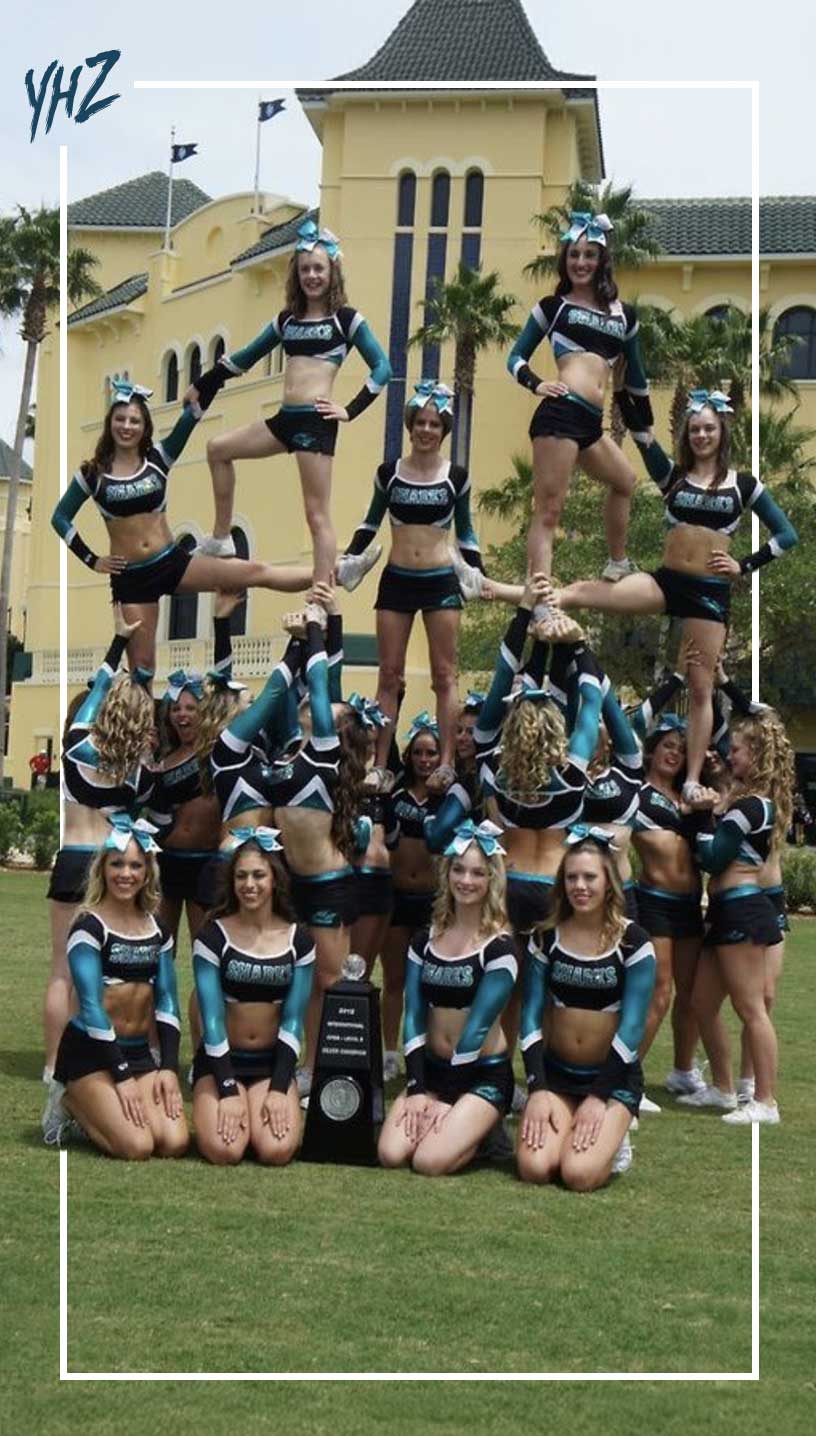
How to build a Pyramid in Cheerleading?
If you’re new to cheerleading or looking to refine your technique, learning how to do a cheer pyramid is a fundamental skill. Here’s a step-by-step guide:
- Assemble Your Team:
- Start by assigning roles within your team. You’ll need a combination of strong, stable bases, agile and balanced flyers, and vigilant spotters.
- Set the Foundation:
- The bases should stand shoulder-width apart, with their knees slightly bent. They should be ready to support the flyers by holding their feet securely.
- Position the Flyers:
- Flyers should step onto the bases’ hands or shoulders, keeping their core engaged and maintaining proper alignment. It’s essential to communicate clearly during this process.
- Build Upwards:
- Once the first level is secure, additional flyers can climb onto the backs or shoulders of the flyers below them. Each level should be added carefully, with spotters ready to assist if needed.
- Check Stability:
- Before completing the pyramid, ensure that all levels are stable. Flyers should maintain their balance, and bases should be firmly planted. Any wobbling should be corrected immediately.
- Execute the Pyramid:
- Once the pyramid is fully constructed, the team can hold the position for the required time, perform any additional movements or transitions, and then safely dismount.
- Dismount Safely:
- To dismount, flyers should carefully step down or be assisted by the spotters. The bases should help guide the flyers down to avoid any falls or injuries.
By following these steps and practicing regularly, your team can build strong, safe, and visually stunning pyramids that will impress judges and audiences alike.
Mastering the art of cheerleading pyramids takes time, practice, and a deep understanding of technique and safety. By focusing on the fundamentals, getting creative with your pyramid designs, and following a step-by-step approach, you can lead your team to success. Remember, the key to a great pyramid is not just strength and skill but also trust, communication, and teamwork.
IPP's Premade Mixes are USA Cheer Compliant and customizable! Add Sound FX, swap songs, & more! Add your Team Name to the mix for only $10!





